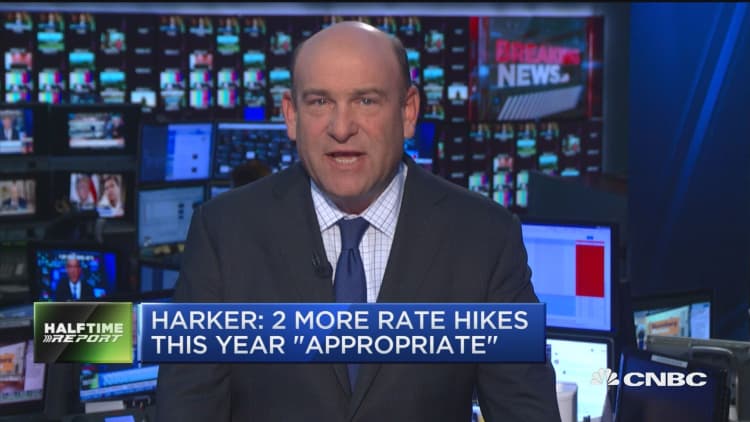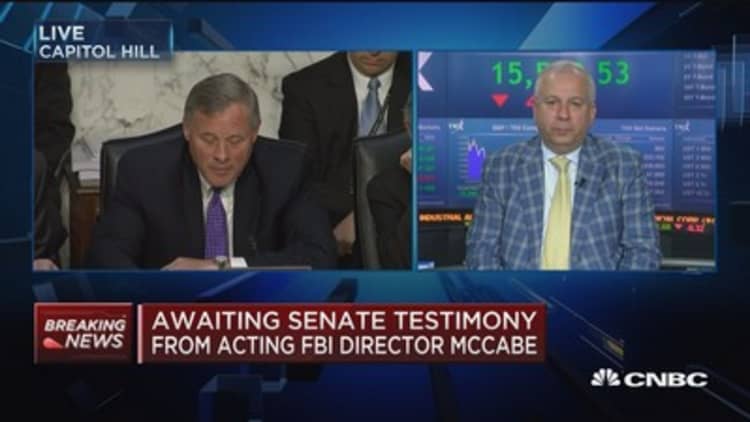While Federal Reserve officials have said they plan to begin a process to normalize their balance sheet, the end result is likely to be a balance sheet that is anything but normal.
Interviews with Fed officials, and public statements they've made suggest the Fed's new normalized balance sheet could end up being three times as large as it was before the financial crisis. And it could be bigger than that.
The Fed has yet to announce a plan to run off its massive $4.4 trillion balance sheet, but market participants in the CNBC Fed Survey expect the process to begin in January 2018, months sooner than previously forecast. Some Fed officials have made no secret of their intentions to announce a plan later this year to reduce the balance sheet. That plan could include a target for the new normal level.
The balance sheet refers to the portfolio of securities — in large part various types of Treasury debt and mortgage-backed securities — that it has purchased.
The reduction most likely will come not from selling bonds but by allowing securities that mature to simply roll off. The Fed currently reinvests the proceeds, a process that will end during the balance sheet runoff. What central bank officials have not agreed to is at what pace they will downsize and what size they consider appropriate.

In an effort to stimulate the economy in the aftermath of the Great Recession, the Fed cut its benchmark interest rate to zero and began buying up government and mortgage-backed securities to drive down interest rates further. The Fed stopped adding to its balance sheet in 2014 and it now stands at more than $4.4 trillion, compared with around $850 billion before the crisis.
But because the economy has grown and the financial world has changed so much since then, officials say there is no going back to the old level. More likely, these officials say, the Fed will aim for a balance sheet size of $2.5 trillion, or a reduction over several years of about $2 trillion.
A bigger Fed balance sheet on a more permanent basis is potentially good news for long-term interest rates. It means the Fed will have fewer bonds to unload, and so exert less upward pressure on interest rates. But if the Fed's calculations are wrong, it could mean higher inflation and higher rates.
The biggest reason why there's no going back to the old balance sheet is currency. For a variety of reasons, the amount of currency in circulation has grown 7 percent a year on average over the past five years, or 3 percentage points faster than in the five years before the crisis. People are simply expressing a desire to hold more cash — ironic in a financial world that is growing more digital — and the central bank's job is to simply meet that desire for cash passively.
About $1.5 trillion of cash is currently in circulation and, if current growth rates continue, that level will be north of $2 trillion in the next five years, providing a floor for just how small the balance sheet can get.
Other factors will combine to keep it large. Unlike before the crisis, the Treasury now keeps most of its money on account at the Fed. At the end of 2007, the Treasury kept just $4.5 billion at the Fed; by the end of 2016, it was $374 billion. Most banking experts think this is a good idea. Commercial banks, which used to service the Treasury's general account, are now subject to capital and liquidity requirements that make holding the Treasury account too costly. The Fed doesn't have to follow those rules.
The same is true for foreign central banks, which hold an additional $250 billion on account at the Fed. Both Treasury and foreign central bank deposits are essentially considered "hot money," meaning it can be quickly withdrawn, threatening liquidity at commercial banks. So experts think it should be on account at the Fed.
Add all three major sources together — currency and Treasury and foreign central bank deposits — and the minimum size of the balance sheet is already easily at $2.5 trillion.
And some argue it should be bigger still.
Some economists have suggested a major reason for the financial panic in 2008 — or at least one that made it substantially worse — was a lack of high-quality assets in the banking system. So a large Fed balance sheet, providing a place where banks can secure high-quality assets to park their money overnight, can help provide financial stability.
Former Fed Chairman Ben Bernanke wrote in a recent blog post: "There are reasonable arguments for keeping the Fed's balance sheet large indefinitely, including improving the transmission of monetary policy to money markets, increasing the supply of safe short-term assets available to market participants, and improving the central bank's ability to provide liquidity during a crisis."
Bernanke added, "It's not unreasonable to argue that the optimal size of the Fed's balance is currently greater than $2.5 trillion and may reach $4 trillion or more over the next decade."
Opponents of a large balance sheet say the Fed should reduce it as much as possible so it doesn't become a victim of politics, where Congress or the executive branch could mandate that the balance sheet be used to buy certain types of securities to solve fiscal problems. They also worry that such a large balance sheet is potentially inflationary.
More than $400 billion of just Treasury debt is scheduled to mature next year, and maybe as much as $200 billion in mortgage-backed securities could be paid off. So a decision this year to simply halt all reinvestment could mean the balance sheet takes a major step toward the new normal in just a single year.
Watch: Fed moves more important than fiscal policy



